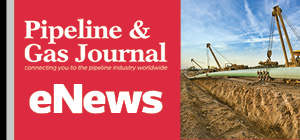TurkStream Gas Pipeline Could Slow EU, Russia Decoupling
(Reuters) — The European Commission announced a revised roadmap to fully wean itself off Russian energy by the end of 2027, but some parts of Europe are moving in the opposite direction.
Russian LNG sales in the continent are actually rising, and gas supply through the TurkStream pipeline has not only survived but expanded.
It’s true that Russian pipeline gas exports to the European Union have plummeted since the start of the war in Ukraine, falling from over 155 billion cubic meters (Bcm) in 2021 to under 40 Bcm in 2024.
But in the same period, Russian LNG sales to the EU nearly doubled to around 25 Bcm, with France, Belgium, Spain and Netherlands buying over 90% of the volumes. The ban on Russian LNG transshipment via EU ports has actually boosted direct spot gas purchases.
This trend should reverse under the new EU Roadmap as it calls for member states to develop detailed national plans for phasing out Russian gas in the next two and a half years. However, the Commission provides no clear legal framework for enforcing these targets.
Meanwhile, the Turkstream pipeline, which runs under the Black Sea to Turkey and on to Southeast Europe, accounts for all of the Russian energy giant Gazprom’s remaining pipeline exports to the bloc. In Q1, 2025, volumes through TurkStream’s European section rose 16% year-on-year to around 4.5 Bcm, driven by higher demand in Hungary and Slovakia.
Since Turkstream’s launch, more than 63 Bcm of Russian gas has reached the EU, generating over 20 billion euros ($22.72 billion) for Gazprom, while supplying gas to Greece, Bulgaria, Serbia, Romania, Moldova, North Macedonia, Bosnia, Hungary and Slovakia.
In 2025, Hungary has emerged as the leading importer, with Russian gas imports expected to rise to around 8 Bcm, up from 6 Bcm in 2023. Slovakia, which previously received its Russian gas via Ukraine, has begun importing from TurkStream, facilitated by Hungary’s expansion of the cross-border transmission capacity from 2.6 to 3.5 Bcm/year. Slovakia’s state gas supplier, SPP, confirmed in March 2025 that it would expand its long-term contract with Gazprom, valid until 2034.
These flows are driven by steep Gazprom discounts. Based on EU custom-based data, Russian pipeline gas sold to EU buyers via TurkStream in 2024 was priced 13–15% lower than alternative options.
Alternative Energy
Alternative gas supply options exist. U.S. LNG exports will surge 15% in 2025, adding 22.5 Bcm, enough to replace Russian pipeline gas and cut the U.S. trade deficit with the EU by up to $10 billion per year. These exports could reach LNG terminals in Turkey, Greece, Croatia and Italy, and then flow throughout Central and Easten Europe (CEE) via interconnectors with over 30 Bcm/year in capacity.
However, swapping overdependence from one supplier to another may also be risky at a time when U.S. leadership is becoming less reliable. Additionally, U.S. LNG exporters charge Europe more than North American buyers and demand 20–25-year contracts, clashing with the EU’s decarbonization goals.
CEE governments, notably Hungary and Slovakia, have opposed the phaseout of Russian gas, claiming it will drastically increase energy costs and undermine Europe’s competitiveness. Yet, a closer look at market differentials and gas company financial reports suggests that the Russian gas price discount does not reach consumers and instead flows to Gazprom-linked suppliers.
To encourage this process of supply diversification, the EU could ban spot gas purchases immediately as they do not require long-term gas contract modifications. The deadlines for phasing out all Russian gas imports in the Roadmap could also be brought forward to the end of 2025, and the EU could make the target binding.
This process could trigger force majeure clauses in long-term Gazprom contracts, though legal experts warn courts may not accept the argument. Still, a better strategy may be to claim that the seismic geopolitical changes since 2022 are forcing companies to renegotiate or cancel their contracts.
To avoid bottlenecks, the European Commission's roadmap commits to help coordinate LNG imports, strengthen the gas demand aggregation mechanism and use interconnections more efficiently to reach landlocked countries. The EU also wants to oblige member states to implement a certification and traceability system for gas origin, requiring all suppliers to disclose the source of gas entering the EU, and ban Russian gas deliveries.
If the EU is serious about truly decoupling from Russian energy, then TurkStream needs to be addressed. The bloc must also rethink energy security to avoid overreliance on any one power. The new roadmap gives Brussels the legal and policy tools to act, but without political resolve, dependency could quietly persist.
(The views expressed here are those of Martin Vladimirov, the Director of the Geoeconomics Program of the Center for the Study of Democracy (CSD).
($1 = 0.8801 euros)
Related News
Related News

- Energy Transfer to Build $5.3 Billion Permian Gas Pipeline to Supply Southwest
- Enbridge Sees High Demand to Expand 593-Mile Canada-to-U.S. Gulf Oil Pipeline
- 450-Mile Eiger Express Pipeline Gets Green Light for Permian-to-Gulf Natural Gas Transport
- Duke Energy to Sell Tennessee Gas Business, 3,800 Miles of Pipelines, for $2.48 Billion
- Energy Transfer’s Lake Charles LNG Project Wins Export Extension
- Enbridge Sees High Demand to Expand 593-Mile Canada-to-U.S. Gulf Oil Pipeline
- Strike Pioneers First-of-Its-Kind Pipe-in-Pipe Installation on Gulf Coast with Enbridge
- Trump Claims Japan, U.S. to Form Joint Venture for Alaska LNG Exports
- American Financiers Target Bulgarian Gas Storage Holding Russian Fuel
- Hungary to Start Talks with Qatar About Buying LNG





Comments